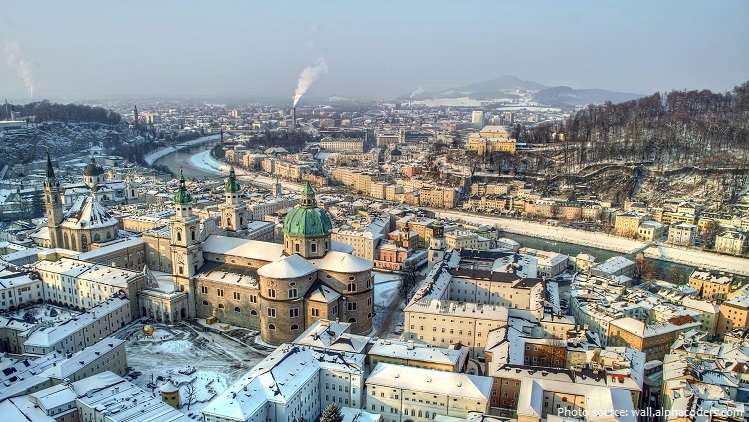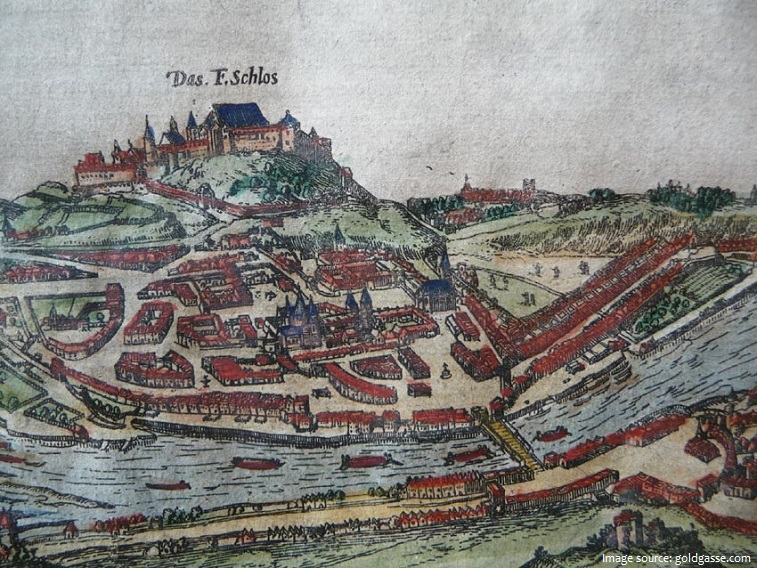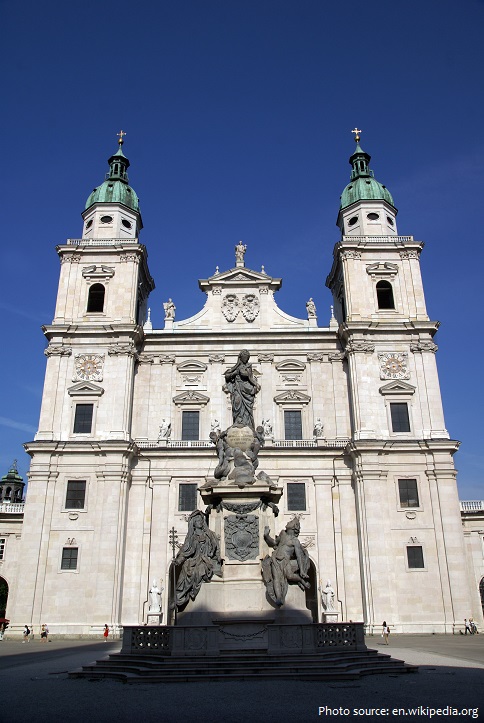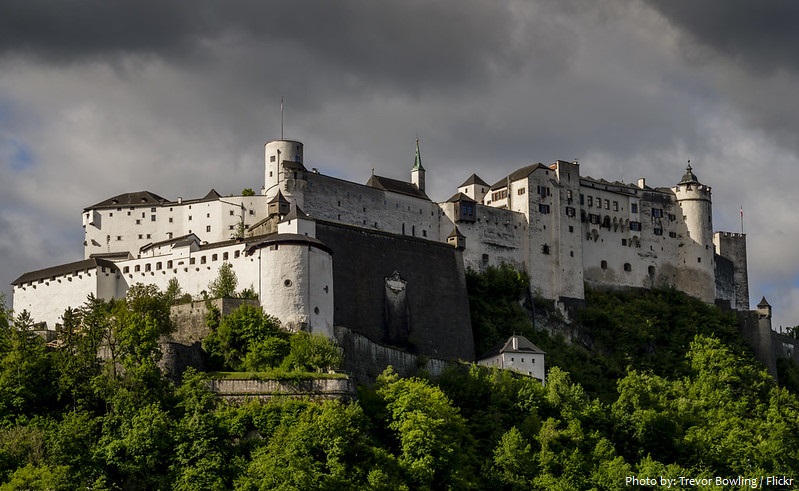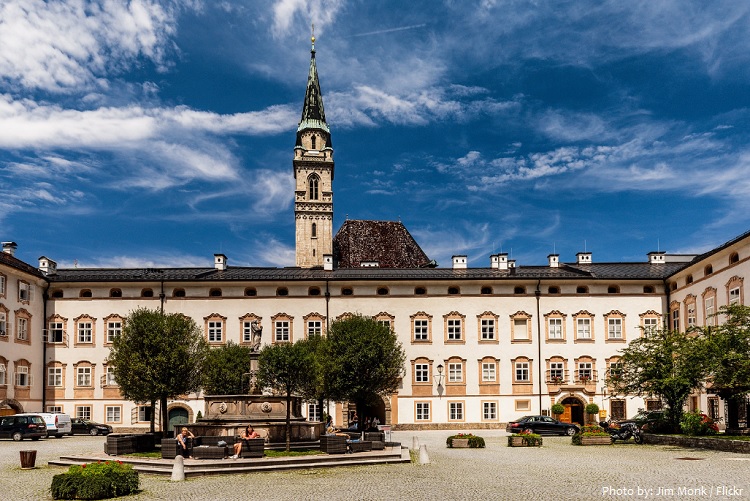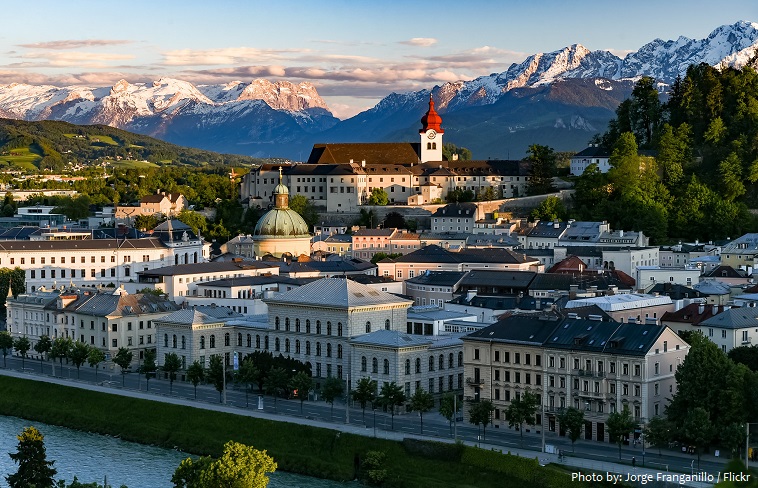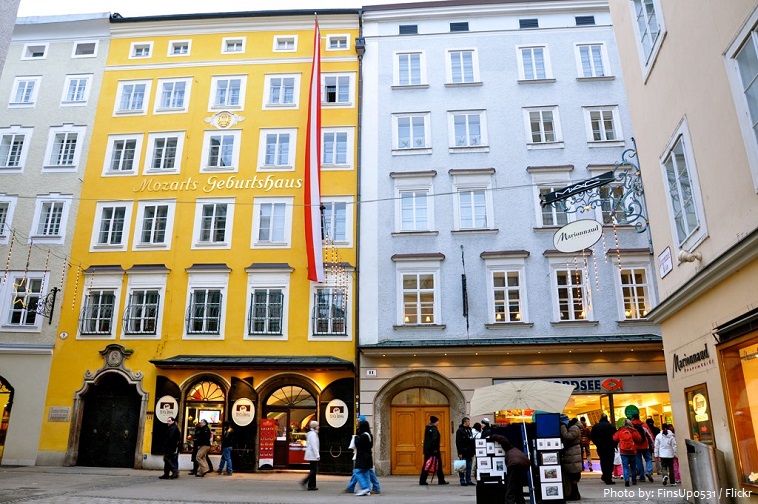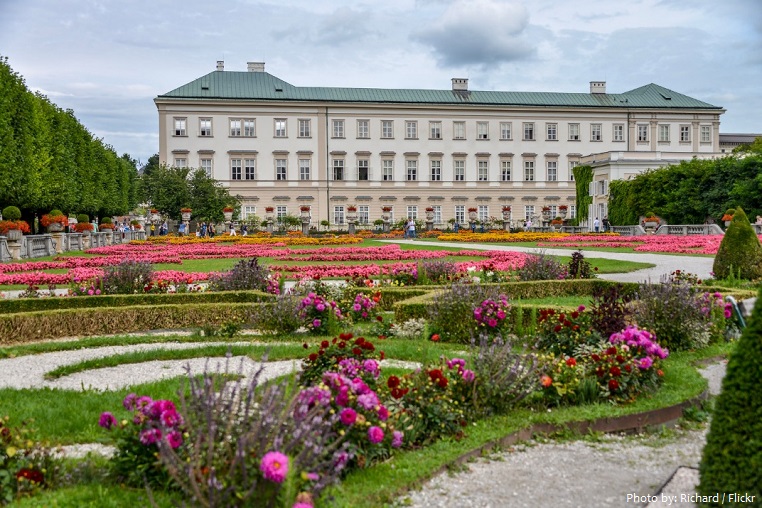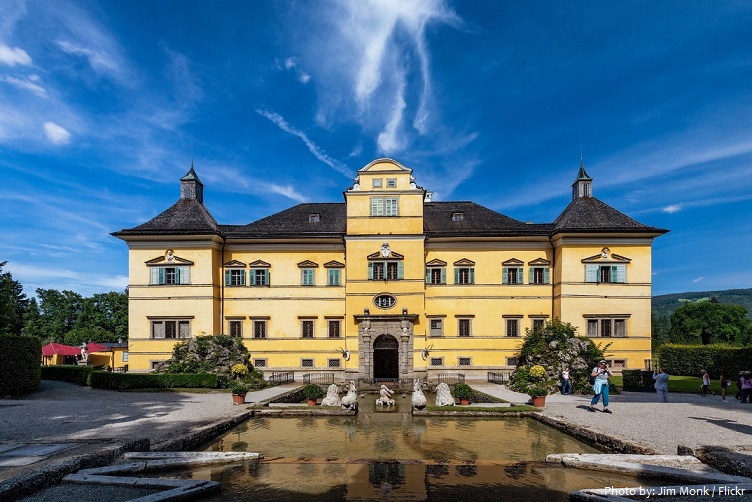Salzburg is the capital city of the State of Salzburg and fourth-largest city in Austria.
It is situated on the banks of the River Salzach, at the northern boundary of the Alps.
As of January 2021, the population of Salzburg is about 160,000 people.
The city covers a total area of 66 square kilometers (25 square miles).
The average altitude is 424 metres (1,391 feet) above sea level.
The city is located on the site of the former Roman settlement of Iuvavum.
Salzburg was founded as an episcopal see in 696 and became a seat of the archbishop in 798.
The name Salzburg means “Salt Castle”. The name derives from the barges carrying salt on the River Salzach, which were subject to a toll in the 8th century as was customary for many communities and cities on European rivers.
The city’s main sources of income were salt extraction and trade and, at times, gold mining.
In the 17th century, Salzburg became a centre of the Counter-Reformation, where monasteries and numerous Baroque churches were built.
Salzburg was the birthplace of the 18th-century composer Wolfgang Amadeus Mozart. He was born on 27 January 1756 at Getreidegasse 9. Mozart would leave Salzburg for Vienna in 1781 with his family including his father Leopold staying back as he and Colloredo had a close relationship. In that time Salzburg was the capital of the Archbishopric of Salzburg, an ecclesiastic principality in the Holy Roman Empire.
After the cultural high in the 18th century the city went through a lot of changes. Throughout the first half of the 19th century Salzburg alternately belonged to different kingdoms and countries.
Salzburg’s historic centre is thus renowned for its Baroque architecture and is one of the best-preserved city centres north of the Alps, with 27 churches.
The city was listed as a UNESCO World Heritage Site in 1996.
Salzburg Cathedral is the seventeenth-century Baroque cathedral of the Roman Catholic Archdiocese of Salzburg in the city of Salzburg, Austria, dedicated to Saint Rupert and Saint Vergilius. Saint Rupert founded the church in 774 on the remnants of a Roman town, the cathedral was rebuilt in 1181 after a fire. In the seventeenth century, the cathedral was completely rebuilt in the Baroque style under Prince-Bishop Wolf Dietrich von Raitenau to its present appearance. Salzburg Cathedral still contains the baptismal font in which composer Wolfgang Amadeus Mozart was baptized.
Hohensalzburg Fortress sits atop the Festungsberg, a small hill in the Austrian city of Salzburg. Erected at the behest of the Prince-Archbishops of Salzburg with a length of 250 m (820 ft) and a width of 150 m (490 ft), it is one of the largest medieval castles in Europe. Hohensalzburg Fortress is situated at an altitude of 506 m.
St Peter’s Abbey or St Peter’s Archabbey is a Benedictine monastery and former cathedral in the Austrian city of Salzburg. It is considered one of the oldest monasteries in the German-speaking area, and in fact the oldest with a continuous history since its foundation in 696. The present-day Romanesque abbey church at the northern foot of the Mönchsberg was erected from about 1130 onwards at the site of a previous Carolingian church building.
Nonnberg Abbey is a Benedictine monastery in Salzburg, Austria. Founded c. 712/715 by Saint Rupert of Salzburg, it is the oldest continuously existing nunnery in the German-speaking world. The monastery complex is today a protected monument and part of the Historic Centre of the City of Salzburg, a UNESCO World Heritage Site since 1996.
Mozart’s birthplace at No. 9 Getreidegasse in Salzburg is a museum. The Mozart family resided on the third floor from 1747 to 1773. Mozart was the seventh child of Leopold Mozart, who was a musician of the Salzburg Royal Chamber. The museum introduces visitors to the early life of the composer, his first musical instruments, his friends, and his passionate interest in opera. The third floor exhibits Mozart’s childhood violin as well as portraits, documents, and early editions of his music, and the second floor is devoted to Mozart’s interest in opera and includes the clavichord on which he composed The Magic Flute. The structure is owned by the Mozart Foundation.
Mirabell Palace is a historic building in the city of Salzburg. It was built about 1606 on the shore of the Salzach river north of the medieval city walls, at the behest of Prince-Archbishop Wolf
Dietrich Raitenau. The palace with its gardens is a listed cultural heritage monument and part of the Historic Centre of the City of Salzburg UNESCO World Heritage Site.
Hellbrunn Palace is an early Baroque villa of palatial size, near Morzg, a southern district of the city of Salzburg, Austria. It was built in 1613–19 by Markus Sittikus von Hohenems, Prince-Archbishop of Salzburg, and named for the “clear spring” that supplied it. Hellbrunn was only meant for use as a day residence in summer, as the Archbishop usually returned to Salzburg in the evening – therefore, there is no bedroom in Hellbrunn.
In the 1960s, the movie The Sound of Music used some locations in and around Salzburg and the state of Salzburg. The movie was based on the true story of Maria von Trapp, who took up with an aristocratic family and fled the German Anschluss. The town draws many visitors who wish to visit the filming locations, alone or on tours.
Because of its history, culture, and attractions, Salzburg has been labeled Austria’s “most inspiring city.”
